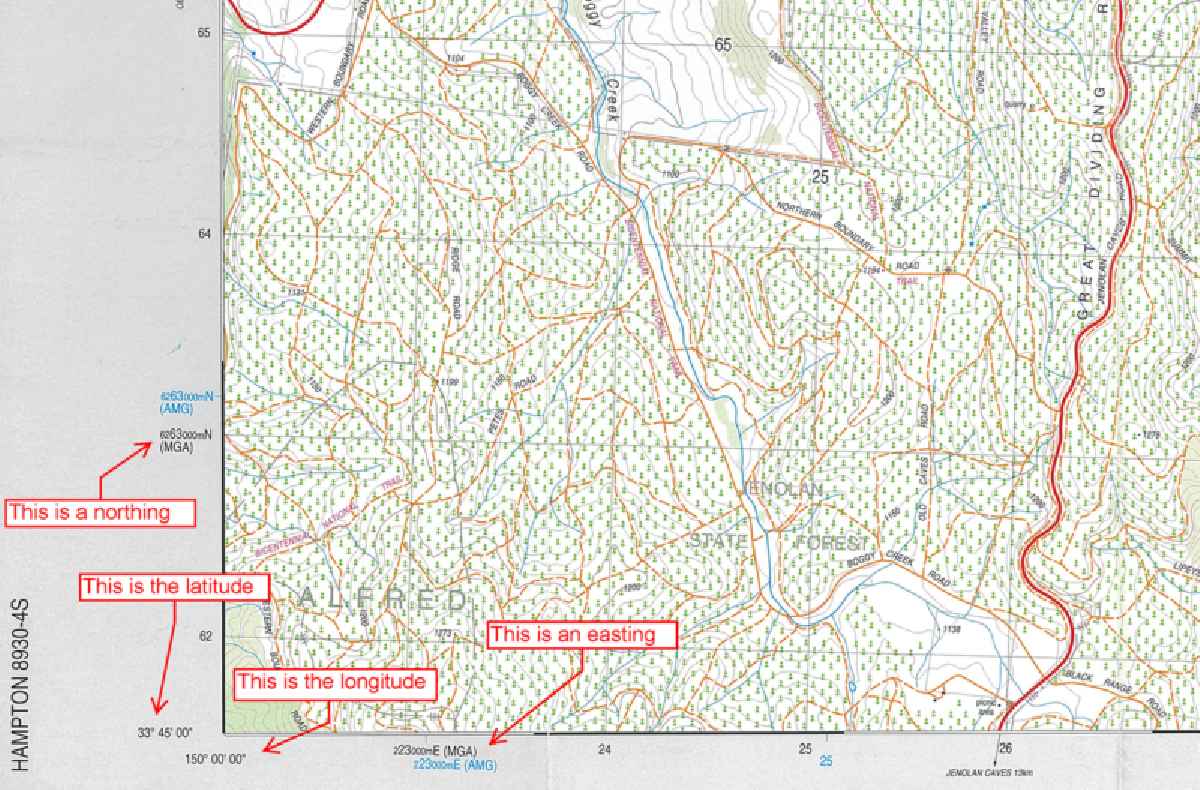In a city, it is quite simple to find a location as the streets are named and the buildings have numbers. The only thing needed is the address. However, locating places in the bush is harder because it’s not a regular daily activity. A uniform referencing system has been developed to help, and now anyone in any location around the world can accurately explain where they are to someone else.
There are the two major coordinate systems that are useful to know for recreational purposes. These are the two main sets of grid lines seen on most topographic maps: (i) the latitude and longitude system and (ii) the Universal Transverse Mercator (UTM) system.
With either system, it’s possible to communicate a location to someone else. For latitude and longitude, the system uses degrees, minutes and seconds. These are the radial positions of lines on a sphere based on a reference point (usually Greenwich, England). For UTM it’s based on a coordinate grid (Eastings and Northings, in metres), although units aren’t included when quoting a grid reference in UTM.
Latitude and longitude lines
Latitude and longitude lines divide the earth into a grid of circular segments: latitude lines are parallel to the equator and run horizontally around the earth. The equator is at zero degrees (0°), and lines run either side from 0° to 90° both north and south. Longitude lines are perpendicular to the latitude lines with 0° running through Greenwich, England. A location is given latitude first, followed by longitude in degrees, minutes and seconds. For instance, Sydney is 33°52.071′ S, 151°12.4392′ E. The S shows that it’s in the southern hemisphere, and E stands for how far East the point is relative to the prime meridian at Greenwich.
The Universal Transverse Mercator (UTM)
The Universal Transverse Mercator (UTM) system divides the earth into a perpendicular set of grid lines measuring surface distances in metres. This system reduces the complexity of transferring a location on a spherical surface to a flat surface (i.e. 2D map).
A UTM position is given by a UTM zone followed by an Easting and Northing. Each UTM zone is 6° wide, and Greenwich England is the reference point. For example, Sydney is in the UTM Zone 56H, and the centre of the city is at UTM Northing 6,252,359.77, and UTM Easting: 334,895.26.
On NSW topographic maps, UTM grid lines are drawn and labelled. Latitude and longitudes are written at the edge of the map area, so it’s possible to locate grid references in terms of degrees, minutes and seconds.
 Title
Title
 Grid
Grid
 Scale
Scale
 Key/Legend
Key/Legend
 Locator/insert maps
Locator/insert maps